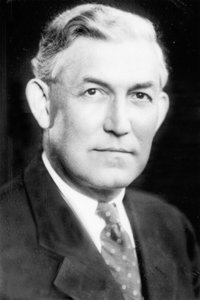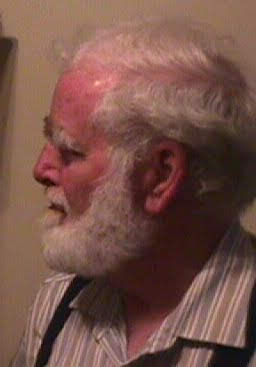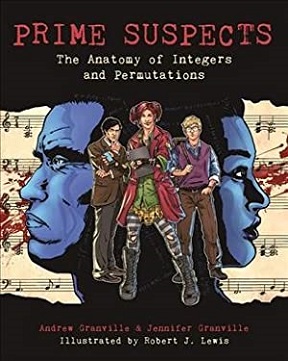Related Research Articles

In number theory, a Carmichael number is a composite number , which in modular arithmetic satisfies the congruence relation:
The Fermat primality test is a probabilistic test to determine whether a number is a probable prime.

In mathematics, an almost perfect number (sometimes also called slightly defective or least deficientnumber) is a natural number n such that the sum of all divisors of n (the sum-of-divisors function σ(n)) is equal to 2n − 1, the sum of all proper divisors of n, s(n) = σ(n) − n, then being equal to n − 1. The only known almost perfect numbers are powers of 2 with non-negative exponents (sequence A000079 in the OEIS). Therefore the only known odd almost perfect number is 20 = 1, and the only known even almost perfect numbers are those of the form 2k for some positive integer k; however, it has not been shown that all almost perfect numbers are of this form. It is known that an odd almost perfect number greater than 1 would have at least six prime factors.

Neil James Alexander Sloane FLSW is a British-American mathematician. His major contributions are in the fields of combinatorics, error-correcting codes, and sphere packing. Sloane is best known for being the creator and maintainer of the On-Line Encyclopedia of Integer Sequences (OEIS).

Richard Kenneth Guy was a British mathematician. He was a professor in the Department of Mathematics at the University of Calgary. He is known for his work in number theory, geometry, recreational mathematics, combinatorics, and graph theory. He is best known for co-authorship of Winning Ways for your Mathematical Plays and authorship of Unsolved Problems in Number Theory. He published more than 300 scholarly articles. Guy proposed the partially tongue-in-cheek "strong law of small numbers", which says there are not enough small integers available for the many tasks assigned to them – thus explaining many coincidences and patterns found among numerous cultures. For this paper he received the MAA Lester R. Ford Award.
John Lewis Selfridge, was an American mathematician who contributed to the fields of analytic number theory, computational number theory, and combinatorics.

Mark Kac was a Polish American mathematician. His main interest was probability theory. His question, "Can one hear the shape of a drum?" set off research into spectral theory, the idea of understanding the extent to which the spectrum allows one to read back the geometry.
Norman Levinson was an American mathematician. Some of his major contributions were in the study of Fourier transforms, complex analysis, non-linear differential equations, number theory, and signal processing. He worked closely with Norbert Wiener in his early career. He joined the faculty of the Massachusetts Institute of Technology in 1937. In 1954, he was awarded the Bôcher Memorial Prize of the American Mathematical Society and in 1971 the Chauvenet Prize of the Mathematical Association of America for his paper A Motivated Account of an Elementary Proof of the Prime Number Theorem. In 1974 he published a paper proving that more than a third of the zeros of the Riemann zeta function lie on the critical line, a result later improved to two fifths by Conrey.
Peter Benjamin Borwein was a Canadian mathematician and a professor at Simon Fraser University. He is known as a co-author of the paper which presented the Bailey–Borwein–Plouffe algorithm for computing π.
Carl Bernard Pomerance is an American number theorist. He attended college at Brown University and later received his Ph.D. from Harvard University in 1972 with a dissertation proving that any odd perfect number has at least seven distinct prime factors. He joined the faculty at the University of Georgia, becoming full professor in 1982. He subsequently worked at Lucent Technologies for a number of years, and then became a distinguished Professor at Dartmouth College.
The Chauvenet Prize is the highest award for mathematical expository writing. It consists of a prize of $1,000 and a certificate, and is awarded yearly by the Mathematical Association of America in recognition of an outstanding expository article on a mathematical topic. The prize is named in honor of William Chauvenet and was established through a gift from J. L. Coolidge in 1925. The Chauvenet Prize was the first award established by the Mathematical Association of America. A gift from MAA president Walter B. Ford in 1928 allowed the award to be given every 3 years instead of the originally planned 5 years.

Helmut Maier is a German mathematician and professor at the University of Ulm, Germany. He is known for his contributions in analytic number theory and mathematical analysis and particularly for the so-called Maier's matrix method as well as Maier's theorem for primes in short intervals. He has also done important work in exponential sums and trigonometric sums over special sets of integers and the Riemann zeta function.

William Robert "Red" Alford, Ph.D, J.D. was an American mathematician and lawyer, who was best known for his work in the fields of topology and number theory.
In mathematics, Carmichael's totient function conjecture concerns the multiplicity of values of Euler's totient function φ(n), which counts the number of integers less than and coprime to n. It states that, for every n there is at least one other integer m ≠ n such that φ(m) = φ(n). Robert Carmichael first stated this conjecture in 1907, but as a theorem rather than as a conjecture. However, his proof was faulty, and in 1922, he retracted his claim and stated the conjecture as an open problem.

Stanley Wagon is a Canadian-American mathematician, a professor of mathematics at Macalester College in Minnesota. He is the author of multiple books on number theory, geometry, and computational mathematics, and is also known for his snow sculpture.
In mathematics, the Davenport constantD(G ) is an invariant of a group studied in additive combinatorics, quantifying the size of nonunique factorizations. Given a finite abelian group G, D(G ) is defined as the smallest number such that every sequence of elements of that length contains a non-empty subsequence adding up to 0. In symbols, this is
Carl Douglas Olds was a New Zealand-born American mathematician specializing in number theory.

Kevin B. Ford is an American mathematician working in analytic number theory.

Prime Suspects: The Anatomy of Integers and Permutations is a graphic novel by Andrew Granville, Jennifer Granville, and Robert J. Lewis, released on August 6, 2019 and published by Princeton University Press.
Daniel Larsen is an American mathematician known for solving a 1994 conjecture of W. R. Alford, Andrew Granville and Carl Pomerance on the distribution of Carmichael numbers, commonly known as Bertrand's postulate for Carmichael numbers.
References
- ↑ Andrew Granville at the Mathematics Genealogy Project
- ↑ W. R. Alford; Andrew Granville; Carl Pomerance (1994). "There are infinitely many Carmichael numbers" (PDF). Annals of Mathematics. 139 (3): 703–722. doi:10.2307/2118576. JSTOR 2118576. MR 1283874.
- ↑ Andrew Granville; Greg Martin (2006). "Prime Number Races". Amer. Math. Monthly. 113 (1): 1–33. doi:10.2307/27641834. JSTOR 27641834.
- ↑ Andrew Granville (2008). "Prime Number Patterns". Amer. Math. Monthly. 115 (4): 279–296. doi:10.1080/00029890.2008.11920529. JSTOR 27642472. S2CID 2924252.
- ↑ Andrew Granville (2005). "It is easy to determine whether a given integer is prime" (PDF). Bulletin of the American Mathematical Society. 42 (1): 3–38. doi: 10.1090/S0273-0979-04-01037-7 . MR 2115065.
- ↑ "MAA Chauvenet Prize page". Archived from the original on 6 April 2003. Retrieved 18 January 2008.
- ↑ List of Fellows of the American Mathematical Society, retrieved 2013-01-19.
- ↑ Andrew Granville; Jennifer Granville (2019). Prime Suspects: The Anatomy of Integers and Permutations. Princeton University Press. ISBN 978-0691149158.